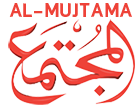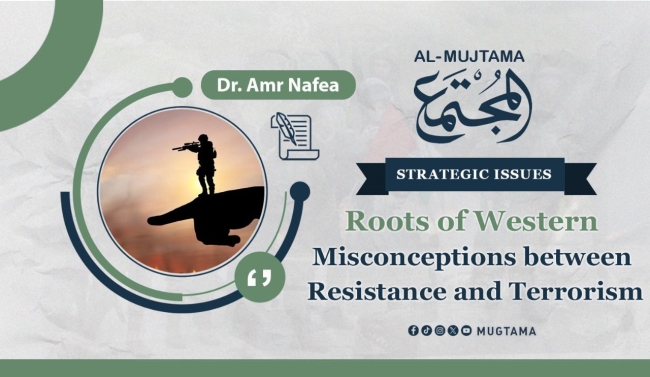Roots of Western Misconceptions between Resistance and Terrorism
When Benjamin Netanyahu, the Prime Minister of the Zionist entity, was “Israel's” ambassador to the United Nations in 1986, he introduced a book titled “Terrorism: How the West Can Win.” The book was a collaboration of a large group of Western politicians and decision-makers—around 40 writers and orientalists—who participated in the conference held at the Jonathan Institute in Washington. In this book, they laid out the principles and systems of the “war on terrorism” and who the enemies of “Israel” and the United States were to be.
The institute was named “Jonathan” in memory of Netanyahu's brother, who was killed in the famous “Entebbe Operation” in 1976. This operation involved the hijacking of a French passenger plane by a group of Palestinians and German leftists to release Palestinian prisoners, resulting in casualties and fatalities in clashes between the two sides.
Netanyahu used the experiences of these politicians in establishing the rules of war against the world and began to lecture and guide the Western world on combating terrorism. Naturally, by “terrorists,” he meant only two entities: Islam and communism.
Netanyahu believed that the upcoming enemies of the West were these two forces: Islamic resistance and Muslims in general, and the Communist camp with Russian intelligence (KGB). Deceptively, the usurpers and killers—the Jews on the land of Palestine—became the victims. They drew themselves as the poor defenders of their so-called confiscated land and violated honor, who were displaced and had their homes destroyed over their heads, living in the open without shelter. Ironically, Palestinians, in turn, were portrayed as extremist criminals!
In the seven chapters of the book, Netanyahu, who carried his brother's body covered in blood amid his wife's screams, kept tackling his greatest obsession: how to overcome any resistance to the Zionist occupation, ensuring sovereignty and security for “Israel.” Indeed, Netanyahu succeeded in manipulating the West, spreading his malicious ideas into Western and American perceptions, already qualified to absorb those ideas hostile to everything green and red.
The prominent thinker Edward Said, in his own book “Blaming the Victims: The Study and the Palestinian Cause,” commented on this, saying that Netanyahu's study succeeded in magnifying the scale of Palestinian violence in a way that had an impact on European reality. By the end of the decade, the U.S. adopted the same discourse as “Israel” and exploited the fears of Jews to arouse Jewish and Christian sentiments against Islam.
Terrorists and the War on Terrorism
In the Jerusalem Conference at the “Jonathan” Institute in 1979, Senator Jackson defined terrorism as intentional and organized killing, as well as the distortion and threatening of innocents to instill fear in order to achieve political objectives.
Experts like Fred Halliday and Michael Ledeen find defining terrorism and its causes challenging, but they note the consensus among terrorists on believing in social and political change without resorting to elections, democratic mobilization, or forming political parties. Instead, they believe that political situations can be changed by killing individuals to overthrow governments. Interestingly, this same logic is applied by the United States and “Israel” in the Middle East, where they think that killing their adversaries will lead to their triumph over terrorism.
The Gap between “Hamas” and Terrorist Groups
When it comes to the Islamic Resistance Movement (Hamas), we’ll find significant differences in its internal structure compared to the narratives presented by groups like “Al-Qaeda” and “ISIS.” It is not, as claimed by the Zionist military spokesperson, connected to terrorist groups draped in black, including “Al-Qaeda” factions that are both pro- and anti-Iran.
The Differences Between “ISIS” and “Hamas”
- Nature and Ideology:
- Hamas: A nationalist liberation movement with a religious framework.
- ISIS: An international and border-crossing ideological organization.
- Roots and Focus:
- Hamas: Rooted locally with a clear focus on Palestinian liberation.
- ISIS: Perceives borders as illusions and works towards erasing national boundaries.
- Composition:
- Hamas: A resistance organization led entirely by Palestinians, with a discourse specifically directed towards Palestinians, similar to the Palestine Liberation Organization (PLO).
- ISIS: A multinational organization.
- Targets:
- Hamas: Neither targets Muslims, Islamic states, nor even non-Islamic states except for “Israel.”
- ISIS: Launched terrorist acts against Muslims and Islamic nations.
- International Terrorism Record:
- Hamas: Has no record of international terrorism.
- ISIS: Has a well-documented record of international terrorism since 2015 till now.
- Legality:
- Hamas: Legally recognizes “Israel” as an occupying state to the Palestinian territories.
- ISIS: Lacks any legal document justifying violence against civilians.
- Political Engagement:
- Hamas: Participated and won in elections, not solely relying on armed force.
- ISIS: Even rejects the principle of political representation.
- International Recognition:
- Hamas: Seeks international recognition.
- ISIS: Views international recognition as undermining its legitimacy.
- ISIS Perspective:
- ISIS: Doesn’t believe in Hamas and considers it a hypocritical movement that aligns with world leaders.
These differences highlight the divergent backgrounds, goals, and ideological components between “Hamas” and “ISIS” or even “Al-Qaeda.”
The “Israeli” Perspective on “Hamas”
“Israeli” politicians generally share a unified view when dealing with the rooted “Hamas” within the Gaza Strip, considering it a terrorist organization. However, they differ on whether “Israel” contributed to its growth. While some former “Israeli” officials express regret for allowing “Hamas” to grow without completely eliminating it, others, like Shalom Harari, a retired senior “Israeli” military intelligence officer in Gaza, stated to The New York Times in 2009, “Israel never financed Hamas. Israel never armed Hamas. This and other warnings were ignored. The reason for this was neglect, not a desire to fortify the Islamists.”
In this context, Sheikh Ahmed Yassin, in many of his statements before his martyrdom, said that “Israel” monitored the Islamists' institutions, as it did with all institutions, and tried to maintain balances within the Strip. According to Sheikh Yassin, “Israel” allowed everyone to grow in their own way until the time came, letting them destroy each other.
A former “Israeli” Foreign Minister emphasized the determination to eliminate “Hamas,” the same way the world dealt with Nazis and “ISIS.” He pointed out that leaving them was negligence, asserting that “Israel” never funded “Hamas.”
History and the Resistance Triumph
In a study titled “The Aggression on Gaza: The Twelfth War” by Counselor Tariq Al-Bishri on the Gaza war in 2005, he believes that it is impossible to eliminate any resistance. The public liberation war in Egypt from 1936 to 1954, led by the Free Officers, employed tactical guerrilla warfare theory. Despite the significant losses suffered by the resistance, it managed to create turmoil and inflict real losses on the occupier.
Therefore, resistance defends existence and personal freedom. Self-interest is shorter-lived than existence and less essential, making the resistor endure longer because they won't stop defending their existence. When one feels they are achieving their interests, circumstances lead them to loss rather than gain. The Vietnamese, despite Vietnam's small size, triumphed and forced the United States to withdraw. Similarly, the Algerians ultimately triumphed over France and expelled them.
-------------------------------------------------------------


